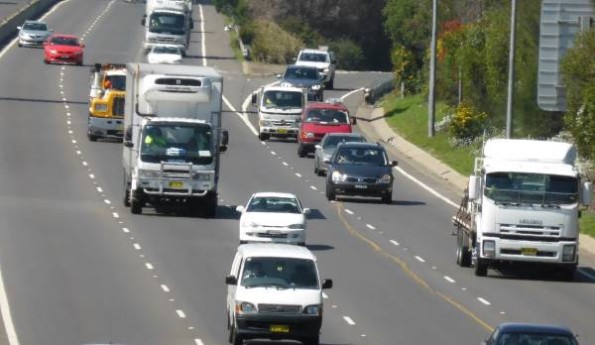Merging into a stream of traffic is a critically important skill, especially at motorway speeds where getting it wrong can cause a serious crash. We merge like a zip – alternating vehicles slotting into the line of vehicles already on the motorway. Traffic engineers must create motorway entrances and on-ramps that give drivers enough time to get up-to-speed so that they don’t cause drivers in the left-hand lane to slow down.
What factors go into on-ramp design?
- The slope of the ramp – either uphill, downhill or flat
- The length of the ramp
- The curve of the ramp
- The width of the ramp (can it hold two vehicles wide for some of its length, and how those two lanes eventually merge into one)
- Whether it has traffic lights metering vehicles onto the motorway
- The speed of the traffic that the vehicles will be merging with
- How visible the motorway is from the on-ramp.
In an ideal situation an on-ramp is a long downhill that gives all traffic enough distance to accelerate to the same speed as the traffic flowing on the motorway. In the case of the entrance below in Sydney (opposite the Silverwater and Bankstown exit on the M4), it’s an up-hill, but does have its own lane. Many entrances don’t, though.

The distance required is calculated using:
- The speed at which drivers must merge (e.g. 90kph)
- The speed at which they enter the on-ramp (e.g. 30kph)
- The manner in which the acceleration is accomplished (uphill, downhill, or flat road).
Typical acceleration rates for different vehicles are used. According to Austroads If there’s a 6% grade downhill, it takes half as long to get to 100kph as on a flat road, but if there’s a 6% grade uphill then can takes almost twice as long to get from 50kph to 100kph as on a flat road. However, these aren’t observed because people use more throttle when travelling uphill and less when travelling downhill so that the overall acceleration rate stays in their comfort zone. Drivers also adjust their acceleration based on the perceived length available to accelerate.
On-ramps are expensive to build and they take up space, so making them as short as possible is a priority. Ways to shorten the on-ramp are:
- increase the entry speed to the on-ramp on the arterial road
- make the speed of motorway traffic visible as early as possible to encourage acceleration
Vegetation is restricted where vehicles merge. Lines are tapered together
Factors that increased the risk of accidents when merging
- Short on-ramp (research shows the shorter the merge length, the higher the crash rate)
- Reduced visibility of traffic on the motorway or ahead on the ramp (e.g. because of a crest)
- High speed (reduces the reaction time)
- Tight turns (particularly ‘parclo’-type loop ramps which are a partial clover leaf shape)
- Adverse camber turns (i.e. road slopes towards the outside of the kerb rather than the inside)
Modern vehicle performance
Many on-ramp lengths were set in the 1980s from research using vehicles of that era and older. Modern vehicles have much better acceleration characteristics and can cope with much shorter entrances than older vehicles. It’s common now for light cars to be able to accelerate to 100kph from rest in less than ten seconds. Fully laden semi-trailers still require longer distances than are feasible to build on on-ramps, though.
Research by Austroads found that on-ramps could be shortened in many places which would lead to operational cost savings as passenger vehicles are capable of greater acceleration rates. Every 250m of ramp can cost between $350,000-500,000 dollars, so a project with an on-ramp and off-ramp in either direction could save up to $2 million dollars by choosing the correct length of on-ramp.
